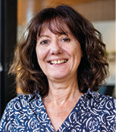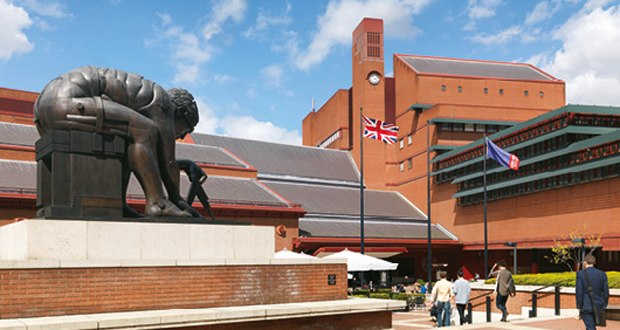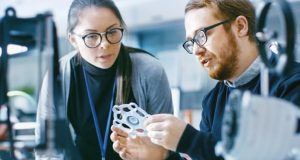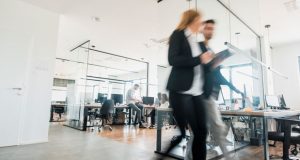 The October Workplace Trends conference focused on ‘Workplace; the user experience’, an apt choice given the ongoing debates on whether employers should mandate, encourage or entice workers into the office. Sara Bean reports from the British Library
The October Workplace Trends conference focused on ‘Workplace; the user experience’, an apt choice given the ongoing debates on whether employers should mandate, encourage or entice workers into the office. Sara Bean reports from the British Library
In an inspiring introduction to the broader themes of the day, Dr Nicola Millard, Principal Innovation Partner, BT Business Chief Technology Officer (CTO) considered the reinvention of work in the digital age and how do we make work, work? We must recognise we’re operating in a digital age, where the workplace is not the office or even home, but the digital space she said. Workplace leaders’ challenge is to blend these physical and digital realms together.
Creating a space where employees feel they belong were the objectives of Tom Helliwell of BDG Architecture + Design and David Laver, Global Head of Facilities Management for creative agency WPP. They described the creation of WPP’s new London office which aims to encourage knowledge workers to feel like members of a campus community.
One of their key remits was to attract and retain a multigenerational workforce, which according to Iain Shorthose of Paragon Workplace Solutions means accommodating no less than five generations. In a panel discussion on the expectations of Boomers to Zoomers, it was revealed that as Gen Z are 17 per cent less likely to have a dedicated space at home – it’s not surprising that they are the only generation to select individual focused work as one of the three main reasons to go into the office.
However, they’re also a lonely community, so there’s a need to create environments which offer a feeling of belonging and flexible spaces that suit a variety of work activities. Paragon’s latest research illustrates the importance of creating a workspace that supports multigeneration needs, but where to start? Workplace expert and author Neil Usher was on hand to introduce his new book, co-authored with Kursty Grove on ‘Workspace Made Easy: A clear and practical guide on how to create a fantastic work environment’.
SEEING THE LIGHT
The most thought-provoking topic of the day was the impact of workplace lighting on health and wellbeing, co-presented by Ulysse Dormoy of Atrium, with Bob Fosbury and Glen Jeffery of University College London. The research was illuminating. While the uptake of LED lighting in buildings has increased to help improve energy efficiency, a resulting deficiency of ‘healthy lighting’ is having a detrimental impact on our health.
According to the research, mitochondria, the battery of the body, found in our cells, is super sensitive to light. Mitochondria needs sugar to function, and when the body is exposed to infra-red light it uses more sugar, but blue light it consumes less, so blood sugars increase. As a result, studies have found that astronauts become pre-diabetic and age faster after being exposed exclusively to LED light. With LEDs dominating the built environment, aside from being outdoors as much as possible to replenish your infra-red ‘battery’, the researchers recommended the introduction of infra-red lighting in workplaces to help address the shortfall.
WOMEN’S TALK
Moving from light to sound, office acoustics specialist Paige Hodsman and workplace psychologist and author Nigel Oseland explored the cultural, psychological and physiological reasons why women often struggle to make themselves heard at work.
This is due, they explained, to a combination of cultural bias towards deeper voices, women having higher pitched voices that don’t travel as far, and the fact that men and women use different parts of the brain to process language and communicate. They also coined the phrase ‘Bropriation’ which describes the experience of women who find their ideas explained back to them by a man, presenting them as their own. Acknowledging the issue is a good start but the longer-term goal of the researchers is to provide guidance and training to help improve communications between the sexes.
GREAT EXPECTATIONS
Data is a powerful tool in meeting the challenges of managing the hybrid workplace, said Hodan Aden of Empire AI. In her analysis of office space utilisation, she demonstrated how machine learning models combined with an analysis of employee activities can help produce workplaces well equipped to meet hybrid workers’ needs.
Mark Catchlove of MillerKnoll Global Insight Group wound up the day with insights on ‘relationship-based work’. As focus-based work can be performed anywhere, the importance of creating community spaces in the workplace is more important than ever he explained. When you feel you belong at work you work harder, which is why the future of work is about developing and growing relationships.
The creation of shared spaces such as workplace cafes is no longer just about the food or drink, he added, but to provide a variety of spaces which help reduce any sense of isolation. It also fosters chance encounters or that phrase so loved of workplace designers, serendipity. Catchlove revealed we’re also seeing the growth of workplace neighbourhoods which offer occupants who are no longer offered a fixed working area, spaces which help foster a sense of belonging.
As Catchlove concluded, while supporting work activities remains important, supporting the social relationships that enable collaboration and productivity is crucial. It’s all about making work, work.
FURTHER INFORMATION





